
About UsThe Numismatic Bibliomania Society is a non-profit organization promoting numismatic literature. For more information please see our web site at coinbooks.org SubscriptionsThose wishing to become new E-Sylum subscribers (or wishing to Unsubscribe) can go to the following web page link MembershipThere is a membership application available on the web site Membership Application To join, print the application and return it with your check to the address printed on the application. Membership is only $15 to addresses in the U.S., $20 for First Class mail, and $25 elsewhere. For those without web access, write to: David M. Sundman, Secretary/TreasurerNumismatic Bibliomania
Society AsylumFor Asylum mailing address changes and other membership questions, contact David at this email address: dsundman@LittletonCoin.com SubmissionsTo submit items for publication in The E-Sylum, just Reply to this message, or write to the Editor at this address: whomren@coinlibrary.com
BUY THE BOOK BEFORE THE COINYou won't regret it! |
- WAYNE'S WORDS: THE E-SYLUM SEPTEMBER 25, 2011
- DAVIS NUMISMATIC LITERATURE SALE CLOSES OCTOBER 1, 2011
- OCTOBER 2011 PITTSBURGH ANA EXHIBIT DEADLINE EXTENDED
- NEW BOOK: ONE COIN IS NEVER ENOUGH
- NEW BOOK: U.S. POSTAL HISTORY AND POSTAGE STAMPS 1834-1853
- BOOK REVIEW: AMERICAN ART MEDALS, 1909-1995
- QUERY: DEFINING SO-CALLED DOLLARS
- MORE ON THE ALEXANDER MEDALLION
- DIGGING OUR OWN GRAVE: KAVAN RATNATUNGA'S ARCHAEOLOGICAL DIG
- MORE ON SECRET COMPARTMENT COINS
- QUERY: WHY IS THE DOLLAR CALLED A DOLLAR?
- BOOK VS MONOGRAPH: MORE ON "A FORGOTTEN NICKEL"
- NOTES FROM E-SYLUM READERS: SEPTEMBER 25, 2011
- ARIZONA CONGRESSMAN INTRODUCES LEGISLATION TO ELIMINATE DOLLAR BILL
- BBC VIDEO ON MAKING BANKNOTE PAPER
- SPECIMEN BANKNOTE GOES MISSING IN SWAZILAND
- CANADA INTRODUCES QUARTERS COMMEMORATING THINGS THAT DON'T EXIST
- NUMISMATIC JOKES
- FEATURED WEB PAGE: HISTORY OF THE U.S. SILVER DOLLAR
WAYNE'S WORDS: THE E-SYLUM SEPTEMBER 25, 2011

We have 1,454 email subscribers, plus 162 followers on Facebook, including George Fuld.
This week we open with a reminder about Charlie Davis' literature sale and an opportunity to exhibit at the upcoming ANA show in Pittsburgh. Next up are items on two next books and the author's thoughts on American Art Medals.
Other topics this week include why the dollar is called a dollar, a plan to eliminate the dollar bill, and the history of the silver dollar. To learn more about another Travers book, Wildman coins and coins commemorating things that don't even exist, read on. Have a great week, everyone!
Wayne Homren
Numismatic Bibliomania Society
DAVIS NUMISMATIC LITERATURE SALE CLOSES OCTOBER 1, 2011
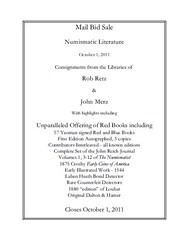 Our sale of numismatic literature closes Saturday October 1. The catalogue plus images of some 200 lots may be found at our website www.Numisbook.com
Our sale of numismatic literature closes Saturday October 1. The catalogue plus images of some 200 lots may be found at our website www.Numisbook.com
Charles Davis
Numismatic Literature
P.O. Box 547
Wenham, MA 01984
Tel: (978) 468 2933
Fax: (978) 468 7893
OCTOBER 2011 PITTSBURGH ANA EXHIBIT DEADLINE EXTENDED

Sam Deep writes:
The deadline to apply to exhibit your collection at the Pittsburgh National Money Show has been extended to allow exhibitors more time to recover from Chicago. You now have until September 29 to go to this link to show off your material at the biggest National Money Show ever:
http://www.nationalmoneyshow.com/assets/files/
PittsFiles/Exhibits/2011PittsburghExhibitApplication.pdf
NEW BOOK: ONE COIN IS NEVER ENOUGH
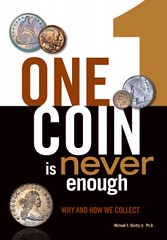 Krause Publications, a worldwide leader in coin and paper money books, magazines, online products and events, has released a new book that takes a fun look into the minds of collectors -- One Coin is Never Enough: Why and How We Collect.
Krause Publications, a worldwide leader in coin and paper money books, magazines, online products and events, has released a new book that takes a fun look into the minds of collectors -- One Coin is Never Enough: Why and How We Collect.
In One Coin is Never Enough, author Dr. Michael S. Shutty, Jr., explores the act of coin collecting from every angle and provides guidance on how to get started and enjoy this great hobby. He contends that coin collecting is nothing less than a creative endeavor that allows collectors to express themselves in unique ways by forming meaningful collections.
In particular, strategies for enhancing the excitement of the hunt and the sweet taste of acquisition are examined while challenging the reader to appreciate, and embrace, the deeper motivations that urge us to seek out that special coin. For more information visit
www.sellcoinbooks.com/new-category/one-coin-is-never-enough
NEW BOOK: U.S. POSTAL HISTORY AND POSTAGE STAMPS 1834-1853
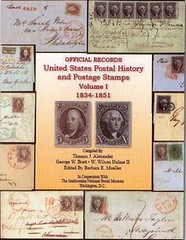 Our good friend Jim Lee is publishing "The Travers Papers", the previously never published story of the 1847 stamps from official records, postal reform, postal conventions, etc.. A deluxe publication in two volumes, cloth, slip case, dust jackets, a limited edition, 1,300+ pages, We offer the same pre-publication deal as Jim Lee; $225.00 plus $15.00 postage to a US address, enquire for foreign postage on all copies ordered and paid for by October 15th. If copies are still available after that date the published price will be $300.00 plus postage, a second printing is not anticipated and we think extremely unlikely. Delivery is expected before we leave for Monaco November 30th. For more details please see:
www.pbbooks.com/Travers.jpg
Our good friend Jim Lee is publishing "The Travers Papers", the previously never published story of the 1847 stamps from official records, postal reform, postal conventions, etc.. A deluxe publication in two volumes, cloth, slip case, dust jackets, a limited edition, 1,300+ pages, We offer the same pre-publication deal as Jim Lee; $225.00 plus $15.00 postage to a US address, enquire for foreign postage on all copies ordered and paid for by October 15th. If copies are still available after that date the published price will be $300.00 plus postage, a second printing is not anticipated and we think extremely unlikely. Delivery is expected before we leave for Monaco November 30th. For more details please see:
www.pbbooks.com/Travers.jpg
BOOK REVIEW: AMERICAN ART MEDALS, 1909-1995
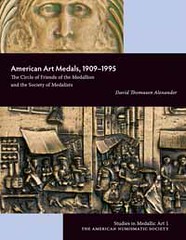 AMERICAN ART MEDALS, 1909-1995. The Circle of Friends of the Medallion and the Society of Medalists. By David Thomason Alexander. Studies in Medallic Art 1, American Numismatic Society, New York, 2011. 294 pages, hard cover, profusely illustrated. Retail $150.00, discounts to dealers.
AMERICAN ART MEDALS, 1909-1995. The Circle of Friends of the Medallion and the Society of Medalists. By David Thomason Alexander. Studies in Medallic Art 1, American Numismatic Society, New York, 2011. 294 pages, hard cover, profusely illustrated. Retail $150.00, discounts to dealers.
Warning: the reviewer is also the author of this book, which will contain some necessary auto-biography. American Art Medals must be regarded as a breakthrough for medal research and cataloguing and an exciting stride into the future for its publisher, the 153 year-old American Numismatic Society (ANS). This new title is the result of study that began in 1974, with I acquired my first group of Society of Medalists issues while a new staff member at Coin World in Sidney, Ohio.
I first encountered SOM in 1956 while visiting the old ANS museum at 125th and Broadway. There I first viewed Paul Manship's 1930 Hail to Dionysus (SOM 2) and Carl Paul Jennewein's 1933 Fame and Glory (SOM 7) with its nearly life-size Cicada. I was planning college study of biology, and the cicada seized my interest. Medal references were then virtually non-existent. Periodicals such as The Numismatist and Numismatic Scrapbook gave some attention to SOM new issues and after 1960, Coin World's founding Editor D. Wayne Johnson treated medals and SOM itself very generously. Joining the Coin World staff, I became increasingly fascinated with medals and became an eager SOM member late in 1974. This Society had developed as an appanage of Medallic Art Company, then still fortunately located in New York City.
As an SOM member I first bought several back issues at relatively hefty prices before discovering that the same issues could be had for a song at bourses around the country. I acquired whole collections from such veteran numismatists as the late Jake Sureck of Oklahoma and Frank C. Darner of Dayton, Ohio. It became immediately apparent that dramatic varieties existed that no one had seemed to notice. For instance, my example of Manship's Dionysus, purchased from SOM itself in 1974 displayed a dark brown patina and a sharply squared edge, while the Sureck and Darner pieces were clear saddle-brown with boldly rounded rims. A hint into how this happened was provided by abundant die rust on the medal from SOM. Simply stated, an SOM medal struck in 1930, 1940 or 1970 would necessarily show considerable variation in patina and edge.
Next came discovery of the Circle of Friends of the Medallion (COF). Their medals were issued two per year from 1909-1915 but were housed in tan-covered books with fascinating prose and poetry relating the subjects and themes of the medals. It was obvious that COF was a predecessor of SOM, but these older medals were truly scarce and there was next to nothing available in print about them, and even SOM Executive Secretary Mary Louise Cram denied any knowledge of this earlier series. I was able to provide an in-depth review of COF in the 1991 ANA Centennial Anthology.
One of the great appeals of these two series was and remains their pivotal role in the world of sculpture and the arts. Simply stated, COF and SOM medals are "affordable art," as all are the work of America's greatest 20th century sculptors, whose sculpture in the round is simply beyond the reach of all but the most wealthy lovers of the arts. Long undervalued, these large, hefty and wholly fascinating medals will now be far more accessible to many collectors who may have been waiting for the opportunity to plunge into this area of medal collecting, once a systematic, readable and profusely illustrated modern guide was provided.
Observation is a basic principle of science. Without printed references, observation of actual medals yielded a wealth of basic information. Becoming a full-time cataloguer with the trail-blazing firm of Johnson and Jensen in 1981, I was at once exposed to thousands of medals with limitless knowledge to be derived by observation. In the 1970's true pioneers began to fill the void in medallic literature, notably R.W. Julian with Medals of the United States Mint, the First Century (1977) and H. Joseph Levine with his auction catalogues and Collectors Guide to Presidential Inaugural Medals.
Levine enunciated an important basic principle that would attract coin collectors to the medal field. His work with official inaugural medals demonstrated that medallic topics with clear boundaries attract collectors comforted by perceptible limits in time and space. Clearly marked limits allow "completeness" as a collecting goal, rather than open-ended areas without boundaries. Both COF and SOM medals offer such limits and today stand with clearly defined beginnings and endings. COF flourished 1909-1915; SOM, 1930-1995.
American Art Medals opens with an introduction to the medal in general and offers concise histories of the two organizations. New facts emerge including the correct founding date of SOM, 1928 rather than the endlessly repeated 1930. The two groups' founders and philosophies are explored, along with the key role both played in the development of Medallic Art Co. The COF series trickled into oblivion in 1915 for yet-unexplained reasons, SOM faded away in 1995 as a result of corporate change and resulting upheaval. Both are now closed series, offering a stable collecting target for newcomers who until the new book appeared had no accessible guide to either series.
Another basic goal of American Art Medals was to explore and record the hitherto ignored varieties in color (patina) and strike and to examine the wealth of varied edge markings. Some issues offer major variations in diameter and metal, notably the Richard Recchia and Carl Schmitz medals struck during the copper shortages of 1943-1944. Then there is the disappointing tale of the full-size .999 silver "Restrikes" that were launched with such optimism in the 1970's, only to stumble and fall thanks to the spectacular surges in the 1970's silver market.
The variations in color are captured in life-size color digital images, captured with supernal skill of photographer Robert Krajewski, former staff member at Stack's in Manhattan, with additional images by ANS photographer Alan Roche. A photo record and detailed written listing of edge markings of both series is the first to be published. Each medal issue and all variations are numbered. Thus, John Flanagan's 1932 Aphrodite-Swift Runners is SOM issue 6. Deep red-brown with sea-green highlights is 6.1; glossy hematite red is 6.2; bright malachite green, 6.3.
The exploration of the last SOM issues clarifies these little known, poorly publicized medals and reveals varieties down to the final medal, Geri Jimenez Gould's 1995 Last Supper Plaquette, SOM 129, now known to have been released with no fewer than three edge varieties. Also listed are the Special Issues for SOM anniversaries and a few derivative pieces including Medallic Art's nearly forgotten medallic paperweights of the 1970's.
Each medal listed is accompanied by a biography of the artist, linking the medalist to the larger worlds of art and numismatics and reminding collectors of other works that each sculptor created. The artists' own views of their designs and their significance provide insights into their thinking as they developed these medallic sculptures. Detailed numismatic descriptions of each issue include numbers reportedly struck (listed where known), with the caveat that such totals must be regarded as approximate rather than definitive. Simply stated, this nearly 300-page book provides as thorough a delving into these two great series as might be possible, opening up both COF and SOM to a new world of informed collecting.
Thanks are due to ANS leaders including Executive Director Ute Wartenberg-Kagan, Deputy Director Andrew Meadows and Curator Peter Van Alfen, who took an active role in developing American Art Medals. Deserving special thanks is David Yoon of ANS, a trained archaeologist who also possesses an amazing talent for editorial preparation, layout, composition and design. Page layout, cover design and the color dust jacket are all Yoon's work. Q. David Bowers worked to expedite the ANS interest in publishing the manuscript.
Response to American Art Medals has been encouraging. At the recent Chicago American Numismatic Association 120th Anniversary Convention, the Professional Numismatists Guild (PNG) presented their Robert Friedberg Award to author Alexander for his book. The Numismatic Literary Guild (NLG) followed suit with the 2011 Award for Best Token and Medal Book.
With its coated stock, wealth of full-color art, hard cover and colorful dust jacket, American Art Medals has certainly shown a new direction for ANS publications, and will soon be joined by additional Medallic Studies that will show the world just how successfully modern medallic publication can be achieved.
For more information, or to order a copy, see: http://www.numismatics.org/Store/ArtMedals
THE BOOK BAZARRE
QUERY: DEFINING SO-CALLED DOLLARS
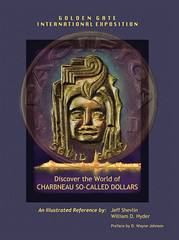 I am in a dialog with So-Called Dollar gurus Jeff Shevlin and Bill Hyder over the definition of So-Called Dollars. They have just published Discover The World of Charbneau So-Called Dollars in which they allowed me to expound in the preface on the subject. You should examine (politically correct for the word "buy") this book. The color illustrations alone are worth the price of admission, let alone their tale of who Charbneau was and their attempt to learn the identity of the mysterious engraver of this tiny medal. You may not have one of these little expo gold dollars in your collection but the book will elevate your knowledge of so-called dollars.
I am in a dialog with So-Called Dollar gurus Jeff Shevlin and Bill Hyder over the definition of So-Called Dollars. They have just published Discover The World of Charbneau So-Called Dollars in which they allowed me to expound in the preface on the subject. You should examine (politically correct for the word "buy") this book. The color illustrations alone are worth the price of admission, let alone their tale of who Charbneau was and their attempt to learn the identity of the mysterious engraver of this tiny medal. You may not have one of these little expo gold dollars in your collection but the book will elevate your knowledge of so-called dollars.
Also, this is the first book in a series of books they plan on So-Called Dollars. (Bless them for this undertaking - it won't make them rich, but readers can benefit from their labor of love!)
Jeff Shevlin insists coin dealers of the last decade of the 19th century originated and defined the term by listing them in their (back-of-the-book) auction catalogs. Richard Kenney gathered them together and published the first list of these in The Coin Collector's Journal (July-August 1953). Dick Kenney held to a strict definition of the term.
But it was Hibler and Kappen who tried best to define the term in their monumental 1963 work, So-Called Dollars. They gave eight points for inclusion -- U.S. only, size restrictions near a silver dollar, no holder or looped -- and such. But HK left it at that for a somewhat more liberal definition.
Jeff is taking a hard-line approach. Like some collectors who say "If it isn't in HK (or will fit in a 2x2 holder) the hell with it!" Not quite Jeff's view. "I personally like the term and definition the hobby currently has for So-called Dollars and I do not intend to redefine that definition." However, he states "I do intend to remove some medals that should not be included and add hundreds more that were not included."
The problem is since the silver dollar size is such a major criteria, then a lot of what has been struck over the years should have been included. Thus Franklin Mint medals, for example, meet this size criteria. I asked both gentlemen would they include Franklin Mint medals as so-called dollars? Neither wanted to include them.
Bill Hyder's response was so insightful I hope they include it -- or the gist of what he wrote -- in their next book. He stated his interest in So-Called Dollars, while intense, is not to obtain every HK medal, like he was filling every porthole in an album. His interest is dominated more by the medal's subject or topic, as he collects everything on the 1894 California Midwinter Celebrations. This includes tokens, medals and badges in addition to the So-Called Dollars from that event.
This is more in line with how medal collectors collect. I learned this early on when I added souvenir spoons to my medal auction catalogs. Collectors of expo medals, I found, also purchased expo souvenir spoons, for example. I would hope more collectors would carry this theme-centric topic forward by adding other "associated items" as postcards, maps, posters and such. (Like Fred Reed did in his Lincoln book, just published.) It adds more depth to your collection.
I tossed out the term "Souvenir medal" as a more apt term to what a so-called dollar really is. And I would include medals in sizes other than that the constrictive silver-dollar size. Several So-Called Dollars were struck with the same design for the same event in a larger size than inch-and-a-half.
Perhaps we are midway in our discussions - no consensus yet. It points out to all authors: If you don't make a clear definition of any subject you write about, it will be argued about for generations.
Care to add your comments on so-called dollars?
MORE ON THE ALEXANDER MEDALLION
Kavan adds:
Osmund gave the Sri Lankan Numismatic Society an excellent power point presentation on this topic at our monthly meeting on 18th Sept, and I requested Ms Smriti Daniel to do this interview.
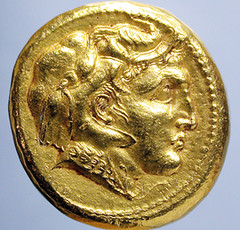 Embossed on the gold coin is the arrogant profile of Alexander the Great. On it, the young conqueror's features endure: his luxuriant curly hair and the crooked line of his broken nose; his elongated cheeks and large, unblinking eyes. Curiously though, his head is covered in the scalp of an elephant, its trunk curling triumphantly over his brow. Around his neck is the image of the Gorgon, the coiling snakes worn as an aegis. The horn of Ammon protects his temple.
Embossed on the gold coin is the arrogant profile of Alexander the Great. On it, the young conqueror's features endure: his luxuriant curly hair and the crooked line of his broken nose; his elongated cheeks and large, unblinking eyes. Curiously though, his head is covered in the scalp of an elephant, its trunk curling triumphantly over his brow. Around his neck is the image of the Gorgon, the coiling snakes worn as an aegis. The horn of Ammon protects his temple.
The striking image is valued for far more than its obvious beauty. It is believed to be the only portrait actually created during the lifetime of Alexander the Great to survive into modernity. This is Alexander as he saw himself - invulnerable, verging on godhood, immortalized in the moment of his triumph.
"It's exactly Alexander, there is no doubt about that," says Sri Lankan numismatist Prof. Osmund Bopearachchi. Having announced the find to the world, more recently Osmund co-authored a book with History professor Frank Holt which was published just last month titled ‘The Alexander Medallion: Exploring the Origins of a Unique Artefact'. Written partly in defence of the authenticity of the gold medallion, the book describes the extraordinary circumstances that led to the unveiling of the priceless artefact. Its historical significance far outweighing the value of the precious metal itself, its history is both the subject of the book and of Osmund's long obsession.
At the centre of the story is a humble village in Afghanistan. Located in one of the most hostile political and geographical landscapes on earth, Mir Zakah lies along the ancient trail that connects Ghazni in modern Afghanistan to Gandhara in what is now Pakistan. Travelling in the company of a French journalist and 12 bodyguards, Osmund made his way there in 2004. As the temperature plummeted to minus 15 degrees centigrade outside, the men covered themselves with carpets to keep warm and brushed their teeth with snow. Despite the abject poverty that surrounded them, in the evenings the numismatist would show his hosts pictures of incredible treasures – of gold, silver and bronze ornaments, vessels and coins - and ask them whether there were any among them they recognized. The pieces he was showing them were in the possession of a Japanese museum.
The museum had been sold the pieces which had been deliberately misrepresented by corrupt agents as belonging to another set known as the Oxus treasure . Now, Osmund was unsurprised to discover the men had in fact seen many of the pieces before. After all, some of them had actually handled the objects themselves, pulling each piece fresh from the earth just a few feet away from where they now huddled together. Some shared their keepsakes with the visitors – on the palm of his hand, one man displayed a single diminutive gold coin. Unbeknownst to the Afghan farmer, the Indo-Scythian coin with the image of Azes stamped onto its face was a rarity, worth an estimated $20,000. Yet, this was only one of Mir Zakah's treasures – and there are hundreds of thousands more.
To read the complete article, see: Getting hold of the Alexander medallion (www.sundaytimes.lk/110925/Plus/plus_05.html)
To read the earlier E-Sylum article, see: NEW BOOK: THE ALEXANDER MEDALLION BY HOLT AND BOPEARACHCHI (www.coinbooks.org/esylum_v14n38a05.html)
DIGGING OUR OWN GRAVE: KAVAN RATNATUNGA'S ARCHAEOLOGICAL DIG
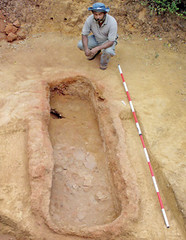 Last year, I had visited excavation sites at Ranchamadama near Embilipitiya and Haldummulla and when the non-profit organization archaeology.lk offered an opportunity to participate in an actual dig they were doing from September 2 to 5, it was clearly an opportunity I did not want to miss. Commander N. G. A. Fernando (Sri Lanka Navy retired) agreed to join this short course with me to learn how to do a scientific archaeological excavation.
Last year, I had visited excavation sites at Ranchamadama near Embilipitiya and Haldummulla and when the non-profit organization archaeology.lk offered an opportunity to participate in an actual dig they were doing from September 2 to 5, it was clearly an opportunity I did not want to miss. Commander N. G. A. Fernando (Sri Lanka Navy retired) agreed to join this short course with me to learn how to do a scientific archaeological excavation.
On the first day after instructions on the excavation and data recording process, we watched work being started on the primary burial site. All that was visible at first was the faint reddish outline of the top of the clay canoe on the gravel estate road. The first day's careful digging did not expose any artifacts.
That evening we walked over to see a settlement on top of a nearby hill. The site was being used as a modern cemetery. The ground had much evidence of ancient artifacts - we picked up a few pieces of broken pottery (potsherds). Prof. Somadeva identified a small piece of quartz as a Microlith, a tool made of clear quartz used in the protohistorical period. Microliths have been found as items placed in burials, some of which date back 30,000 years.
The next day we continued our instruction, as we watched the burial site being dug deeper and deeper. That evening we visited a second burial site nearby, the scientific usefulness of which had been sadly lost. This particular site had been previously dug by the villagers expecting to find treasure, after reading reports of last year's excavations. I requested Prof.Somadeva permission to excavate a part of that grave to find out what had been done to it.
So it was that on the third day we put our instructions to practical use by starting to dig our own grave. We soon found lots of potsherds and burnt charcoal which were probably the human remains in that burial. It had clearly been just dug and refilled when the villagers found nothing of commercial value. At the primary site they had exposed the top layer of crushed pots in which the remains had been cremated. It appears that the skeletal remains from a grave had been brought to these burials to be cremated in these pots.
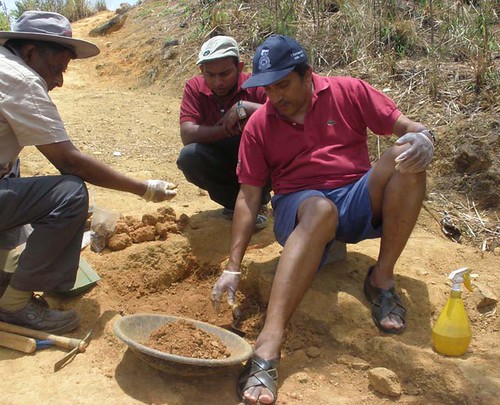
To read the complete article, see: Digging our own grave (www.sundaytimes.lk/110918/Plus/plus_05.html)
For some more images, see: lakdiva.org/suntimes/haldummulla/
MORE ON SECRET COMPARTMENT COINS
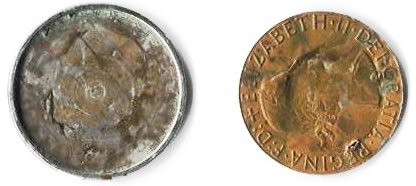
Eric Vanhove writes:
Regarding the secret compartment, I first saw a coin like this at the CIA Museum that had supposedly been taken from a Soviet spy. I think I've seen coins like it in spy books but it is too early in the morning to try and find one of them on my shelves. Any thing about them has always said they were used for hiding microfilm. I always wondered how they made them.
Bob Neale writes:
These may be part of a wartime spying gimmick. There have been lots of hollow coins made; perhaps electroplating is easier and less time consuming if making several copies. Messages go inside, along with a stiffening piece that fits. If it looked and felt right, the walker wouldn't attract suspicion. I'll be interested to learn the real story on this item.
Jeff Swindling writes
I have several half dollars like this, which seem to be magician's coins. Two half dollars are used. The first is machined down to encase another coin (usually a British coin like the one pictured previously, or a Mexican 20 centavo). Another half is machined down to fit into the obverse shell. The "solder" is likely the adhesive used to attach the foreign coin to the interior of the half dollar shell. I find these in circulation all the time when I search $1000 bags of halves from the bank. Last week I found two- half dollars dated 1976 and 1996-- in the same bag. The interior of the obverse shell on my coins has the same markings are the coin pictured in the article.
To read the complete article, see: IS THE HALF DOLLAR WITH A SECRET COMPARTMENT AN ELECTROTYPE? (www.coinbooks.org/esylum_v14n39a15.html)
THE BOOK BAZARRE
QUERY: WHY IS THE DOLLAR CALLED A DOLLAR?
Web site visitor Jill Williams of Appleton, WI writes:
My oldest child (8 years old) would like to know why the Dollar is called a "Dollar." This is one I couldn't answer. Can you help us out?
I answered: "Great question. There's a long and short answer. The short one is that the word "dollar" was based on older silver coins about the same size, called daalder, daler, or taler in various languages. Here's a longer explanation from Wikipedia:
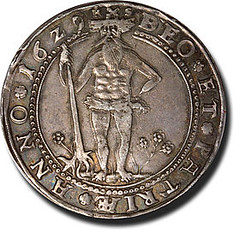 On the 15th of January, 1520, Count Hieronymus Schlick (Czech: Jeroným Šlik z Passounu) of Bohemia began minting coins known as Joachimsthaler, named for Joachimstal (modern Jáchymov in the Czech Republic), where the silver was mined.[1] (In German, thal or tal refers to a valley or dale.) "Joachimsthaler" was later shortened in common usage to taler or thaler (same pronunciation) and this shortened word eventually found its way into other languages: Czech tolar, Danish and Norwegian as (rigs)daler, Swedish as (riks)daler, Dutch as (rijks)daalder, Ethiopian as ታላሪ talari, Italian as tallero, Flemish as daelder, Persian as Dare, and into English as dollar.
On the 15th of January, 1520, Count Hieronymus Schlick (Czech: Jeroným Šlik z Passounu) of Bohemia began minting coins known as Joachimsthaler, named for Joachimstal (modern Jáchymov in the Czech Republic), where the silver was mined.[1] (In German, thal or tal refers to a valley or dale.) "Joachimsthaler" was later shortened in common usage to taler or thaler (same pronunciation) and this shortened word eventually found its way into other languages: Czech tolar, Danish and Norwegian as (rigs)daler, Swedish as (riks)daler, Dutch as (rijks)daalder, Ethiopian as ታላሪ talari, Italian as tallero, Flemish as daelder, Persian as Dare, and into English as dollar.
I also recommended:
en.wikipedia.org/wiki/Thaler
www.genealogy.ro/banat/leeuwendaalder.html
BOOK VS MONOGRAPH: MORE ON "A FORGOTTEN NICKEL"
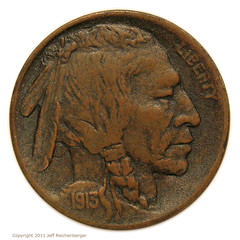 I have a few comments about my monograph, "A Forgotten Nickel".
I have a few comments about my monograph, "A Forgotten Nickel".
First and foremost, it was an honor and privilege to work with Mr. Newman, who supported and encouraged the idea from day one. He made time for our visit to discuss the subject at length, set up a photo session, enjoy lunch, and shoot the breeze. Not to mention months of correspondence and seven or eight edits - and this was just one of several projects he was juggling at the time. All in the midst of celebrating his 100th birthday! The man is a marvel and an inspirational and generous friend to numismatics. I'm very lucky and grateful for the experience, and, I must add, what other 50 year old can honestly say he collaborated on a numismatic paper with someone twice his age!
Secondly, although I suspect it is customary for Wayne to announce any new publication in the "New Book" category, at 12 pages this monograph can hardly be confused as such. Call it a paper, a pamphlet, a study, a brochure, a leaflet, a monograph, or perhaps a book wanna-be, it is not actually a book. I guarantee the weight of this particular item will not compromise the structural integrity of a library shelf.
Finally, as the humor columnist for Coin World I'm compelled to offer something to last week's inquiry, "What is your funniest Numismatic joke?" I don't know what the funniest is, but here is an attempt at something that is current.
Question: How does a 12 page monograph become a book?
A) Through a brisk imagination and delusions of grandeur.
B) Through a generous classification from the esteemed Esylum editor.
C) By binding 30 of them together.
D) All of the above.
Answer: D) All of the above.
(30 copies bound in book form now available for just $200 - That's a $40 savings off our newsstand price!)
For weightier book announcements, check out the October 1875 issue of the American Journal of Numismatics, which was referenced on the Yahoo Colonial Coins group this week. Back to back are articles on S.H. Crosby's Early Coins of America and William Lee's The Currency of the Confederate States of America: American Journal of Numismatics, October 1875 . I'd like to order a dozen copies of each! -Editor
To read the earlier E-Sylum article, see: NEW BOOK: A FORGOTTEN NICKEL (www.coinbooks.org/esylum_v14n39a04.html)
NOTES FROM E-SYLUM READERS: SEPTEMBER 25, 2011
Digital vs Face-To Face
Regarding Dave Bowers' statement that with so much available free on the Internet
perhaps "No longer do we need to pay for anything. No longer do we need to go anywhere..."
David Gladfelter writes:
Granted, the publishing industry and the U. S. Postal Service, among others, have suffered severe loss of business due to competition from the internet as a means of communication, but this results from technological change to which the industries are adapting. Change has been with us since before the horse and buggy era, and we need not lament it.
Those who prefer to skip a numismatic event such as last week's Whitman Expo in Philadelphia are missing out on saying hello to authors Len Augsburger and Joel Orosz (among many others, including of course our dependable reporter, Alan Weinberg). Last year at this show, Len and Joel led a walking tour of historic Philadelphia, including the site of the first U. S. Mint, the reconstructed house where Thomas Jefferson drafted the Declaration of Independence, and Congress Hall where participants were shown actual coins retrieved from the mint property and preserved by Frank Stewart himself. All accompanied by their knowledgeable commentary. Dennis Tucker and the people at Whitman know how to plan and present a great show. It's your loss if you choose to stay at home.
Larry Korchnak adds:
Communication is valuable in whatever form that it takes. As long as we are exchanging thoughtful ideas in a spirit of collaboration to increase knowledge, the format is inconsequential. Face-to face is good, but it has limitations. Digital technology permits us to go everywhere.
A Janvier Medal
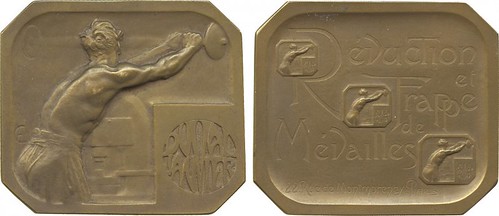
Howard Daniel for forwarded a link to this numismatic medal for sale at sixbid.com by Baldwin's. Thanks! The description is
France, Duval L Janvier, medallist, octagonal Bronze Plaquette, c.1900, view of Janvier's coining press, rev three reduced images of the obverse, Déduction et Frappe de Médailles, 22 Rue de Montmorency, Paris, 60mm x 52mm, in original card case (Jones, Art of the Medal 345; BDM VII 177).
A "Coin of Coins" Design From San Marino
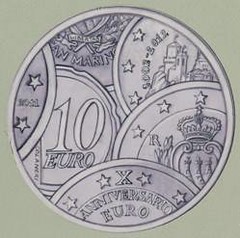
P.K. Saha forwarded this image of San Marino's soon-to-be-issued coin commemorating 10 years of the Euro. It's a "coin of coins" design. I'm not sure if it works, though - to me it just looks cluttered.
State Department Art & BookFair
Dick Johnson sent information about the State Department's upcoming Art & BookFair, noting that "This looks promising for anyone in the DC area."
Thousands of used books, paintings, art objects, textiles and treasures from around the world plus CD's, DVDs, maps, ephemera, stamps, paper currency, coins and much more will be available to the public at Art & BookFair 2011 on two weekends in October – October 15 & 16 and October 22 & 23 from 10 am to 4 pm – at the US Department of State in Washington, DC.
For the past 51 years the Associates of the American Foreign Service Worldwide (AAFSW) has been bringing fun and bargains to the State Department at its annual BookFair, one of the oldest continuous used book sales in the Washington metropolitan area. The Art Corner has considerably expanded over the years and to emphasize this wealth of art items, the event has been renamed Art&BookFair. There is also a Collector's Corner with rare and unusual books from fine libraries. Our donors have lived all over the world and many items can not be found in any other book sale.
Art&BookFair 2011 details: Saturday and Sunday, October 15 & 16 and October 22 & 23, 10 am to 4 pm; in the Diplomatic Exhibit Hall of the US State Department; entrance on C street between 21st and 23rd Streets, NW (the side of the building which faces the Lincoln Memorial). There is street parking and it is within walking distance from the Foggy Bottom Metro. Admission is FREE. On the LAST DAY, October 23, books are HALF PRICE.
For more information, see: Art&BookFair 2011 Will Take Place October 15-23 at the Department of State (www.aafsw.org/2011/artbookfair-2011/)
ANS Open-Source Collection Management System
Megan Fenselau of the American Numismatic Society forwarded this note. Congratulations!
September 16, 2011 ANS EADitor included in Society of American Archivists' Decription Expo 2011 9/16/11 The American Numismatic Society is pleased to announce that EADitor, the open-source collection management and web publication system created by ANS web and database developer Ethan Gruber, has been selected for inclusion in the Society of American Archivists' Description Expo 2011.
Read the full press release online at numismatics.org/wikiuploads/NewsEvents/EADitorPR.pdf
Another Form of Wishing Tree
Joe Boling writes:
In reply to the wishing tree question, there is a torii on top of Mt Fuji that is covered with embedded coins, as well. See attached photos.
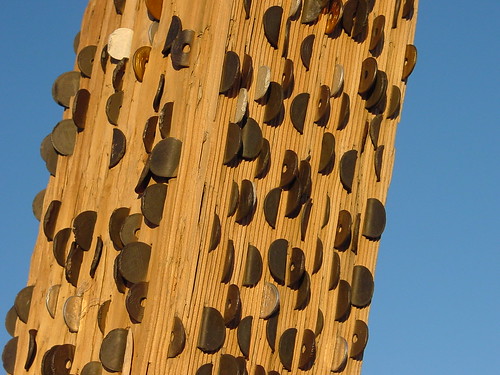
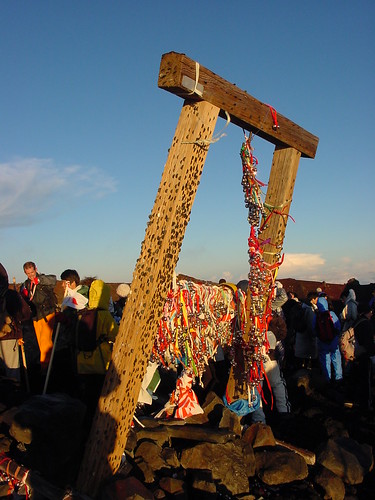
To read the earlier E-Sylum article, see: WISHING TREES: TRUNKS STUDDED WITH COINS FOR LUCK (www.coinbooks.org/esylum_v14n39a19.html)
CONGRATULATIONS TO JOEL OROSZ AND LEONARD AUGSBURGER!
ARIZONA CONGRESSMAN INTRODUCES LEGISLATION TO ELIMINATE DOLLAR BILL
 Everyone likes the sound of a little jingle in their pocket, unless, that is, the metallic clinking comes from one of the growing list of $1 coins minted in recent history.
Everyone likes the sound of a little jingle in their pocket, unless, that is, the metallic clinking comes from one of the growing list of $1 coins minted in recent history.
You know. The money so many Americans have come to hate. The Susan B. Anthony. How about the gold-tinted Sacagawea? Or the presidential or Native American coins that replaced them, and still are being minted?
That lack of love aside, a first-term Arizona Republican congressman thinks he can persuade Americans to do what prior efforts have not: scrap their dollar bills in favor of coins.
Rep. David Schweikert is not relying on Americans changing their habits and voluntarily trading in their bills for dollar coins. His legislation would force people to give up the greenbacks. He said he does not intend to make the same mistake as one former member of the state's congressional delegation.
It was Rep. Jim Kolbe who, in 1997, pushed through a measure to replace the wildly unpopular Susan B. Anthony dollar with what became the Sacagawea coin.
But as Kolbe later conceded, the bill he was able to get through Congress had a shortcoming: It allowed the government to keep printing dollar bills. And as long as those bills remain available, the public has shown little interest in replacing them with chunks of metal.
Schweikert's legislation would require Federal Reserve banks to stop issuing dollar bills when the circulation of dollar coins exceeds 600 million a year, but no later than four years after the measure becomes law.
To read the complete article, see: Deep-six the $1 bill, use coins instead, Rep. Schweikert urges (azstarnet.com/news/local/article_9e8a63e2-56c9-5554-a949-9b25f8c9740e.html)
BBC VIDEO ON MAKING BANKNOTE PAPER
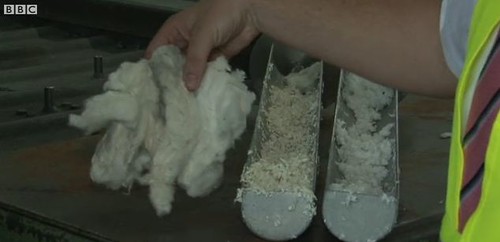
The Lanquart Paper Mill in south eastern Switzerland has been making security and speciality paper for more than 100 years.
It is the only mill in the world that makes the paper that is used for the Swiss franc.
Once the paper is produced it is sent - surrounded by high security - to other factories where the currency notes are then printed.
Marco Ziethen, the production manager at Landquart showed the BBC how it makes money.
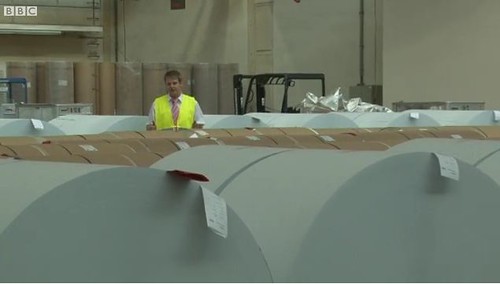
To read the complete article, see: How special bank note paper is made (www.bbc.co.uk/news/business-14989023)
SPECIMEN BANKNOTE GOES MISSING IN SWAZILAND
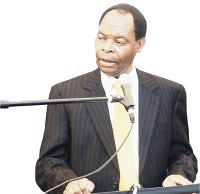 An accountant of the Central Bank of Swaziland has been suspended following the alleged disappearance of a specimen banknote at the bank.
An accountant of the Central Bank of Swaziland has been suspended following the alleged disappearance of a specimen banknote at the bank.
The disappearance of a specimen of the new E200 notes at the Central Bank of Swaziland (CBS) has resulted to insecurity in the bank and fears that there could be a syndicate that intends forging the new bank notes.
A specimen banknote is printed to see whether or not the design is suitable to be put into full production as a currency issue.
Sometimes, specimen banknotes are printed for distribution to central banks to aid in the recognition of banknotes from a country other than their own. The specimen disappeared a while ago and was allegedly sold to a South African man who later on advertsied it for resale abroad.
It is not known what the intention behind the alleged theft of the money copy, which was launched about six months ago, was.
The copy of the money had been allegedly kept in a safe place in one of the managers' offices together with other specimens. An accountant has since been suspended in connection to the matter.
According to well placed sources at the bank, the suspension came immediately after it transpired that there was a deal involving E30 000 that was entered into for the release of the specimen.
The buyer is allegedly an Indian national based in South Africa.
Sources close to the matter revealed that the manager in charge of the notes was out of the country on business when the suspect asked for the safe keys from the person who was safeguarding the manager's office.
The source further alleged that the leakage of the specimen was discovered thro-ugh the interception of electronic correspondences where the buyer was allegedly advertising it for resale.
It could not be immediately ascertained what the buyer wanted to do with the specimen but fears are that he could sell it to money collectors or people who forge money.
To read the complete article, see: Are there people Planning to forge new E200 banknotes? (www.times.co.sz/News/32746.html)
CANADA INTRODUCES QUARTERS COMMEMORATING THINGS THAT DON'T EXIST

I remember when the U.S. State quarters program was launched and everyone got (comparatively) excited about coin collecting. Now that Canada has introduced a collection of coins featuring mythical creatures, I realize how dumb it was to get all excited about states. Canada has a history of prettying up their money, but unlike the plastic currency initiative, this line of coins seems to be all about the coolness factor.
The current coins in the line are lake dragon Memphré, who allegedly lives in Quebec's Lake Memphremagog; Mishepishu an aquatic panther of some sort rumored to live in Lake Superior; and the classic Sasquatch. All of the coins are legal tender and worth 25 cents a piece Canadian, although they cost $24.95 Canadian by virtue of being collectors items and being plain awesome. Besides, these aren't the kind of things you spend. These are the kind of things that are begging to be embarrassing family heirlooms.
To read the complete article, see: Canada Introduces Line of Cryptid Coins That Are Way Cooler Than U.S. State Quarters (www.geekosystem.com/canadian-cryptid-coins/)
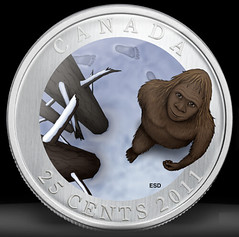 I had to visit the Royal Canadian Mint web site to see if this was a hoax, but apparently the coins are for real even if the subjects are not.
-Editor
I had to visit the Royal Canadian Mint web site to see if this was a hoax, but apparently the coins are for real even if the subjects are not.
-Editor
To buy the Sasquatch coin , see:
25-Cent Coloured Coin - Sasquatch (2011)
(www.mint.ca/store/coin/25cent-coloured-coin-sasquatch-2011-prod1100018)
NUMISMATIC JOKES
John Dirnbauer writes:
Guy walks into a bar and orders twelve shots of Tequila. Bartender lines 'em up. Guy starts to quickly shoot 'em down. Bartender says "hey buddy, slow down . . . what's the hurry? Guy says "if you had what I have, you'd drink 'em fast too." Bartender says "what do you have?" Guy says " 75 cents."
Gosia Fort writes:
My most favorite joke of all is the old Polish numismatic joke. My problem is how to translate the humor based on the play of words. And even if I live up to the linguistic challenge, will it be still funny today when Polish currency is strong while the joke refers to its worthlessness? Anyway since I cannot concentrate on work and I keep thinking about how to preserve the gist of this joke in translation, here it is:
Q&A
- What is backing up the value of American dollar?
- Gold.
- And the value of pound sterling?
- Silver.
- Polish zloty?
- Paper...[make a dramatic pause] donated.
Pete Smith writes:
There are a couple of websites with coin collecting jokes. I didn't think any of them were funny. I do recall one that I thought was funny thirty-five years ago.
Did you know that 64 Kennedy Halves are now worth thirty-two dollars?
Maybe you had to be there.
Maybe if you wait long enough, there will be nothing funny about it anymore. -Editor
FEATURED WEB PAGE: HISTORY OF THE U.S. SILVER DOLLAR
This week's Featured Web Page is an article on the history of the United States Silver Dollar by Richard Giedroyc.The word dollar is not unique to the United States, nor was it first used here. James VI of Scotland struck a 30-shilling coin between 1567 and 1571 generally called the Sword Dollar due to his depiction on the obverse holding a sword. The Double Merk of 1578 is called the Thistle Dollar. Charles II of England (1660-1685) struck a dollar denomination coin for Scotland. Fractional denominations were in half, quarter, eighth and sixteenth dollar denominations. Spain issued crown size silver coins in the denomination of 8 reales. Spanish colonial American Mints struck silver mined in Central and South America into 8 reales and smaller denominations, most of the coins shipped back to Spain. The 8-reales coins not exported to Spain were used in local commerce in the New World, some of them eventually arriving in the English colonies along the Atlantic coast.
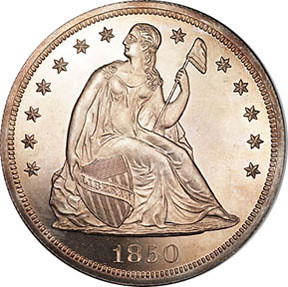
www.coinfacts.com/historical_notes/
history_of_the_silver_dollar.htm
